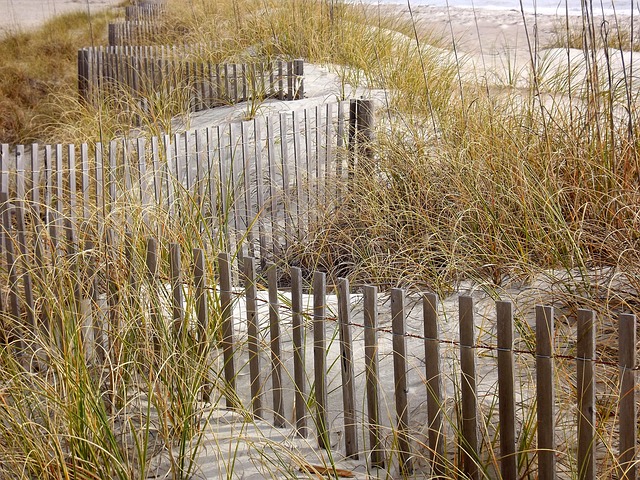Large properties present unique fencing challenges, demanding durable yet cost-efficient solutions. This article guides you through various aspects of selecting and maintaining fences for extensive land areas. From understanding specific needs to exploring budget-friendly materials and design ideas, we offer practical tips for installation and maintenance, ensuring your fence stands the test of time without breaking the bank.
- Understanding Fencing Needs for Large Properties
- Traditional vs. Cost-Effective Options
- Exploring Budget-Friendly Materials
- Design Ideas to Minimize Expenses
- Installation Techniques and Tips
- Maintenance Strategies for Longevity
Understanding Fencing Needs for Large Properties
Large properties present unique fencing challenges compared to smaller plots. The extensive perimeter often requires a robust yet cost-efficient solution that can withstand potential wear and tear from wildlife, extreme weather conditions, and high winds. Additionally, aesthetic considerations come into play, as fences should complement the landscape and overall property design rather than disrupt it.
Property owners must carefully assess their fencing needs, considering factors like security, privacy, noise reduction, and visual appeal. Different fence types offer varying levels of durability, maintenance requirements, and price points. Understanding these nuances is key to selecting a cost-effective fencing solution that meets both functional and aesthetic objectives for large properties.
Traditional vs. Cost-Effective Options
When it comes to fencing large properties, there’s often a perception that traditional options are the only viable choice. However, the landscape has evolved significantly with the introduction of cost-effective solutions that not only match but sometimes surpass the durability and aesthetics of conventional materials. These modern alternatives offer a refreshing take on property boundaries, combining functionality with affordability.
Traditional fencing materials like wood and metal have long been the go-to choices due to their availability and perceived strength. Yet, they often come with high maintenance costs and limited lifespans. In contrast, innovative options such as vinyl, composite, and certain types of chain link fences are transforming the industry. These materials boast enhanced durability against weather conditions and wear, reducing replacement needs. Moreover, they come in a wide array of styles and colors, allowing homeowners to personalize their property boundaries while keeping costs down.
Exploring Budget-Friendly Materials
When considering fencing solutions for large properties, exploring budget-friendly materials can significantly reduce both initial costs and long-term maintenance expenses. Options like vinyl or composite fencing offer durability and low upkeep compared to traditional wooden or metal barriers. Vinyl, in particular, is resistant to rot, rust, and peeling, ensuring it remains robust and aesthetically pleasing over time. Composite materials, a blend of wood fibers and plastic, also mimic the look of natural wood while being more stable against environmental factors.
These modern alternatives are not only cost-effective but also contribute to a property’s overall curb appeal. Their wide availability and easy installation make them accessible choices for homeowners looking to enhance their outdoor spaces without breaking the bank. Additionally, many manufacturers offer various styles and colors, allowing you to customize your fence to match your property’s unique character and design preferences.
Design Ideas to Minimize Expenses
When designing a fence for a large property on a budget, creativity and strategic planning can significantly reduce costs without compromising aesthetics. One effective approach is to incorporate natural features into the design. Utilizing existing trees, shrubs, or even bodies of water as part of the fence line not only saves on materials but also adds a unique, organic appeal. For instance, a living fence using native plants can serve as both a beautiful and cost-effective barrier.
Additionally, opting for simple, functional designs with minimal ornamentation can drastically lower expenses. Rather than intricate patterns or elaborate posts, straightforward styles that align well with the property’s existing landscape will keep costs down while still providing privacy and security. This approach allows homeowners to focus their budget on high-quality materials and robust construction methods, ensuring longevity and value for money.
Installation Techniques and Tips
When installing fencing on a large property, there are several cost-effective techniques to consider. One method is to utilize pre-assembled fence panels, which can be easily installed with the help of a few friends or even hired professionals. This approach saves time and labour costs compared to building custom fences from scratch. Make sure the panels are properly anchored to posts set at suitable intervals, ensuring stability and longevity.
Another tip involves using natural materials like wood or bamboo that are both affordable and environmentally friendly. These materials require regular maintenance but can add a charming aesthetic to your property. Consider hiring local labour or even DIY methods for installation to keep costs down. Additionally, re-using existing materials or recycling old fences can further reduce expenses while minimizing environmental impact.
Maintenance Strategies for Longevity
Regular maintenance is key to ensuring your fence remains a cost-effective solution for years to come. A simple cleaning routine, including brushing and hosing down, can prevent dirt and debris from building up, which may cause damage over time. Inspecting the fence regularly for any signs of wear and tear, such as loose or broken boards, rusted posts, or damaged hardware, is also crucial. Repairs should be addressed promptly to avoid further deterioration.
Staining or sealing the fence periodically can protect it from the elements, particularly if you live in a region with harsh winters or frequent rainfall. Using high-quality materials and following manufacturer instructions for application ensures the best results. Additionally, ensuring proper drainage around the fence line helps prevent water damage and promotes overall health, contributing to its longevity.
